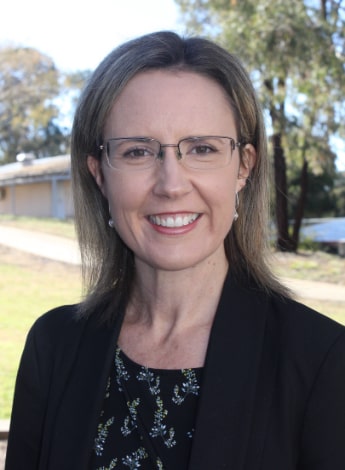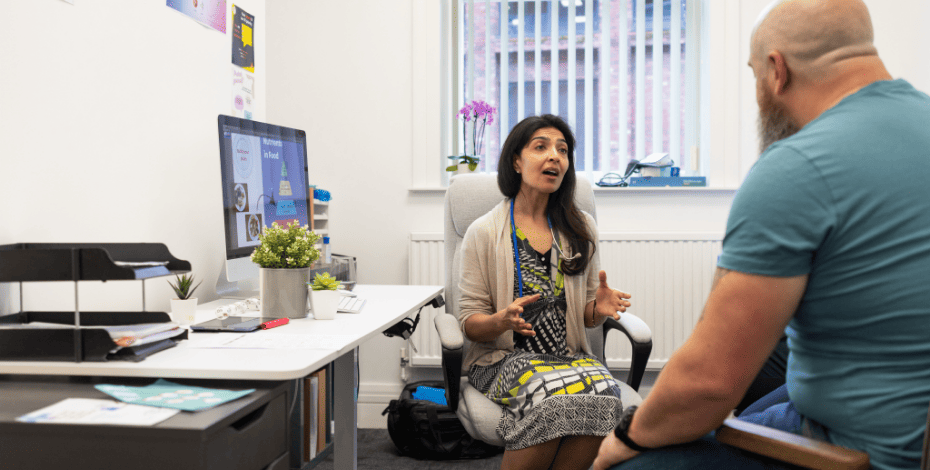
A breath of fresh air

2020 PRF Jill Nosworthy Grant recipient Bernie Bissett discusses her research project.
In 2000, Associate Professor Bernie Bissett left university wanting to work as a musculoskeletal physiotherapist.
But in her first year at the Royal North Shore Hospital in Sydney, she worked and fell in love with intensive care (ICU) physiotherapy. ‘What I loved about it is that it’s a combination of cardiorespiratory, neuro and musculoskeletal, all in one.’
Bernie, the discipline lead of the physiotherapy team at the University of Canberra and a visiting academic physiotherapist at Canberra Hospital, never dreamt of working in research, but with clinical practice spanning Sydney, London and Canberra, she says she reached a turning point.
‘I was really questioning the interventions we were using and there wasn’t actually a lot of evidence that they had an impact on patients’ recovery.’
The pivotal moment in Bernie’s career came when she was looking after long-term ICU patients in Canberra, who were ventilated for months at a time.
Surrounded by a team of consultants who valued physiotherapy, Bernie was challenged by Dr Anne Leditschke to try new things and experiment with new approaches to strengthening these patients.
‘I was a full-time clinician and I had no inclination of taking on research. We started doing strength training with these patients. We’d read a few published case studies and we thought, let’s see if we can try that with our patients.’
Armed with a simple spring-loaded resistance device, Bernie was standing in the storeroom one day when it all fell into place.
‘I was figuring out, this could attach to that connector and that could attach to the tracheostomy. I did a little dance in the storeroom. Wow! This could actually work.
'We tried it out and discovered we could quite safely use this technique with our ventilated patients—and they didn’t crash and burn.’
Over the following years, Bernie and her team published some feasibility work demonstrating that they could perform this technique safely.
Knowing a randomised controlled trial was critical to determining the outcomes of the resistance training, in 2010 Bernie enrolled in a PhD through the University of Queensland.
Between 2010 and 2016, the team conducted a randomised trial using this technique on ICU patients.

Associate Professor Bernie Bissett
Bernie says they discovered that not only did this approach to strengthening breathing muscles improve inspiratory muscle strength, these patients also had improved quality of life (QOL).
‘We were one of the first groups to measure QOL in this kind of patient cohort and to ask patients about their experiences, their breathlessness and their perceptions.
'That actually matters quite a lot when it comes to weaning a patient off a ventilator in the ICU setting. So I got the bug and now I consider myself a researcher.’
The study included a broad range of surgical and neurological patients.
'Regardless of primary presentation to ICU, it was the fact of being dependent on the ventilator for a long time that had weakened their breathing muscles, so we could see the potential value of this intervention.
'Even within 16–24 hours of being on a mechanical ventilator, there’s evidence of muscles being broken down, even as quickly as those first few days. It’s classic “use it or lose it”.’
Bernie cites a French study into ICU limb weakness that found breathing muscle weakness was twice as prevalent as peripheral limb weakness.
‘There’s a big surge in doing early mobilisation in ICU patients because we know muscle breakdown happens really quickly in that first 10 days. We need to be thinking about breathing muscles too, because they’re twice as likely to be in trouble.’
The process for this muscle strengthening includes disconnecting patients from the ventilator and with a Bennett’s connector attaching the resistance device to either a tracheotomy or endotracheal tube.
The patient breathes against the resistance for six breaths before they are returned to the ventilator.
Obviously patients need to be relatively stable to be coached through the process.
Says Bernie, ‘For patients seeing their own progress, when nothing else seems to be getting better, this can be a real source of progression.’
Informed by previous case studies, six breaths is enough for patients to be challenged. The benefits are gained by increasing the pressure resistance.
Patients are given a higher resistance, which they can tolerate—at least 50 per cent of their maximum capability.
‘We titrate it to the point where they can only just get that breath number six and they need a rest. That’s going to be our sweet spot. That will give us the most training benefit.’
Patients undergo six breaths of five sets once a day only on weekdays, Bernie explains.
‘Every day or two we can nudge it up and once they increase from nine up to 30 centimetres of water pressure, that is the time when they manage to breathe without the ventilator support for prolonged periods, up to 12 hours at a go.’
The downside of this original spring-loaded device was that some patients who were very weak found the lower setting too hard, while stronger patients were capable of going much higher than the maximum 41 centimetres of water.
‘That’s what led us to question what they are using in athletes and in other patient populations. And that’s how we came across this new device because it takes a full range between one and 200 centimetres of water pressure.
'It also allows you to track a whole lot of information including an analysis of exactly how much air has been shifted, what pressures have been achieved, and the total work that has been achieved.’
The beauty of this training, says Bernie, ‘is it’s done and dusted within about 10 minutes, one physio at a time.’
With the benefits to patients clearly identified, Bernie says that for physiotherapists, ‘this is a new gadget in our toolkit and it empowers us to provide a titratable resistance. We can be much more confident that we are delivering the ideal treatment intensity.’
In 2020, Bernie was awarded the Physiotherapy Research Foundation (PRF) Jill Nosworthy grant for $24,987, enabling her to expand her research: ‘Feasibility and patient acceptability of electronic inspiratory muscle training in ICU patients.’
Because it is a challenge to recruit patients in an ICU department, Bernie, who is the deputy chair of the ICU Research Committee at Canberra Hospital, says the PRF grant will allow her team to complete a dual centre study that involves Canberra Hospital, and Marc Nickels and the team at the Princess Alexandra Hospital in Brisbane.
The grant will enable the physiotherapy departments to reimburse them for the time associated with data collection, as well as employ a research assistant. The goal of the data is to help design the next stage of testing.
‘Once we’ve shown that it’s feasible and safe and acceptable to patients, we’ll conduct a multicentre randomised trial which will look at: does this training actually hasten weaning from the ventilator? Does it improve the patient’s QOL? Does it reduce their breathlessness?’
That,’ says Bernie, ‘is the end game.’
© Copyright 2025 by Australian Physiotherapy Association. All rights reserved.





